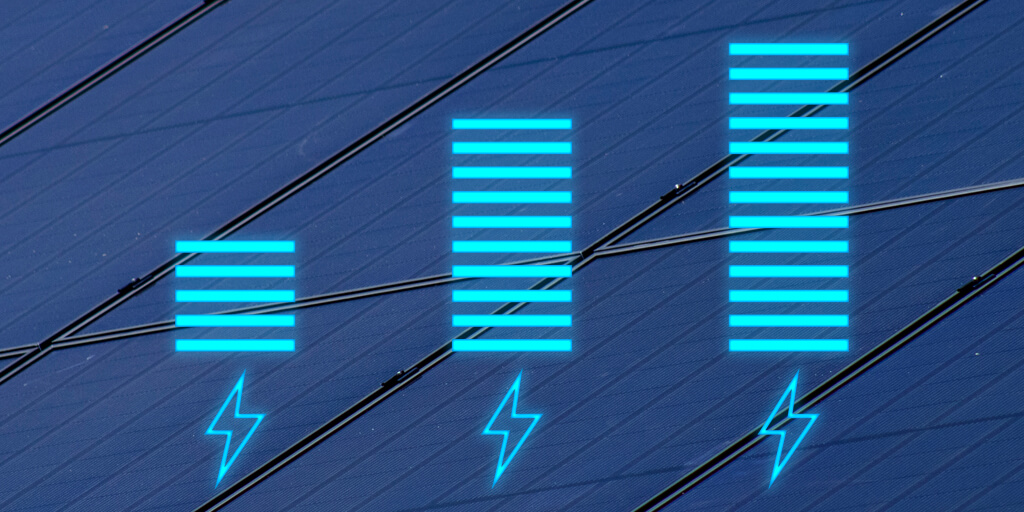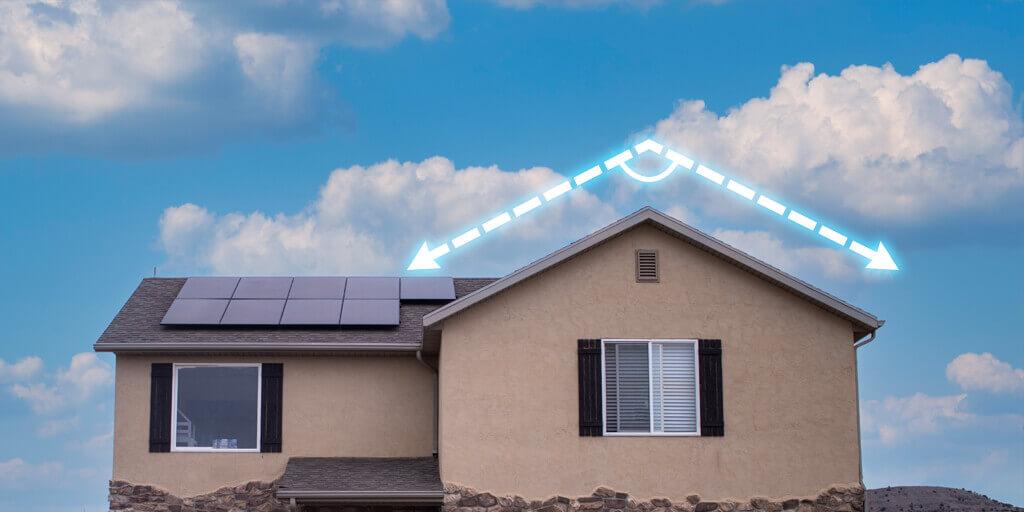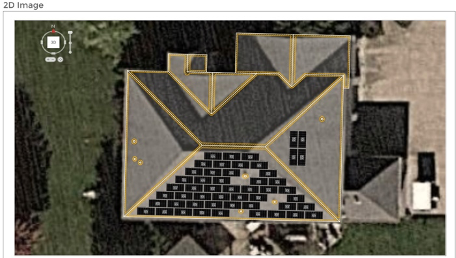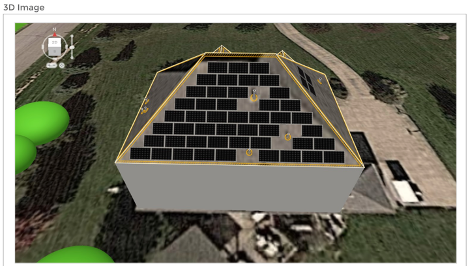

As you consider investing in a solar system for your home, you can easily spend hours researching how much solar panels can save you and your family on your monthly electricity bill. While it is important to understand the numbers behind solar savings, many homeowners forget to research other contributing factors—such as how much power each panel will be producing.
At Blue Raven Solar, we want to provide insight into the type, size, and design of solar panels and how these elements can impact your solar savings.
How Much Do My Panels Actually Produce?
Your solar system works as each solar cell in your solar panel absorbs sunlight, converting the energy into electricity, and transferring it to your home through a network of wiring and inverters. Ideally, a solar panel is rated to produce 320 watts of energy an hour, which is enough to power a refrigerator and freezer.
However, the amount of energy or electricity each panel produces at any given time is different for every system. Real-world settings include several variables not featured in lab tests, which means solar panels often perform at less than 100% efficiency. The amount of power produced by your solar panels can be affected by:
- The type of panels installed
- Where you live
- The condition of your roof
After factoring in all of the variables listed above, the standard 320-watt panel should produce an average of 200-265 watts per hour over a 24-hour period.
Because this is a large range, we recommend getting a free custom-designed savings report from our Blue Raven Solar experts. This estimate will give you the specifics for your home and how much power you can expect your solar panels to produce in kilowatt-hours (kWh).
How is the Amount of Solar Power Calculated?
Figuring out the amount of solar power produced by an individual solar panel is a simple calculation. You need to know the rated wattage of the type of panel and the hours of daylight the panel will receive. With those details, the following formula allows you to calculate power production:
Power in watts x Average hours of direct sunlight = Daily watt-hours
While hours of direct sunlight can be difficult to predict with complete accuracy due to shade, changes in the weather, and different seasons, using this equation can give you an idea of how much power your solar panels will produce. From there you can determine your potential savings on electricity costs.

What Types of Solar Panels Exist in the Residential Industry?
Although scientists are constantly improving solar technologies, there are currently three types of solar panels used in the industry and installed on homes:
- Thin Film
- Polycrystalline
- Monocrystalline
Each of these panel types differs in appearance, technology, efficiency, cost, and warranties. Each type of solar panel has unique advantages, and each is a viable option for residential homeowners. Let’s review the different types and take a look at their specific attributes.
Thin film panels have the lowest energy efficiency, but, they provide two major advantages:
- Low cost
- Can maintain efficiency at high temperatures
In the future, technological advances will likely improve thin film panels and help them become a popular choice for solar adopters.
Polycrystalline panels have been gaining traction in the residential solar industry. They have two main advantages:
- Low production cost
- High energy efficiency
However, they are the largest and least attractive solar panels, causing many homeowners to choose monocrystalline panels.
Monocrystalline panels are the oldest and most developed solar panel. Despite being the most expensive option in the industry, these are also the most popular solar panel option because they are:
- Space efficient
- Produce the most electricity for the space required
Residential solar installers most often recommend and install monocrystalline panels because they do not have the drawbacks of polycrystalline panels, which are often too big to be practical for a home, or thin film panels, which need further development.
Is Bigger Better?
It’s reasonable to think a bigger solar panel would equal more solar cells and more power being produced, but larger solar panels are not commonly used in residential spaces as they are too big to fit on a roof or in a backyard.
Solar manufacturers, over the years, have created the optimal residential solar panel with a standard size of 65 inches by 39 inches. These panels can be configured in a variety of layouts to function on any roof and still have a high number of solar cells. Each of these standard solar panels generally have six rows of ten solar cells.
By requesting a free, zero-commitment savings report from Blue Raven Solar, our solar experts will provide the optimal system design, type of panel, and size based on how much power you would like to generate monthly. (It’s important to remember these estimates rely heavily on the external factors surrounding your home.)
What Factors Change How Much Power Solar Panels Produce?
We all wish solar panels performed at their peak projections, but there are five common variables which contribute to fluctuating efficiency levels of all residential solar systems:
- Sunlight
- Weather
- Roof Angle
- Temperature
- Surface Maintenance

Sunlight
The most significant factor for determining how much electricity a solar panel produces is the amount of sunlight it receives. Depending on where you live, you can expect an average number of sunny days per year.
It is recommended solar panels be placed on southern-facing roofs to optimize production as the sun most constantly shines on rooftops oriented toward the south. However, if your roof faces a different direction, there are solutions available to maximize production like adding a few extra solar panels on east or west-facing roofs, to make up the difference in energy production.
Shade on your roof from trees, structures, or other obstructions will cause overall power efficiency to drop. However, you can remove trees or, depending on your state, look into solar easement laws, which allow homeowners to remove objects blocking sunlight.

Weather
Naturally, solar panels stop producing electricity at night, but what about on cloudy days, in heat or cold, or during extreme weather?
Solar panels still produce energy on cloudy days, but at a slightly lower rate. Light has a wide spectrum; along with visible light there are other frequencies human eyes are unable to see. For example, ultraviolet and infrared light are two “invisible” lights which continue to shine through clouds and can be absorbed by solar panels to produce energy.
Overall, cloudy weather usually decreases panel efficiency by only 10 to 25 percent. Homeowners in states with more cloudy weather, such as Washington or Michigan, often save money by going solar because electricity costs more in these states. Don’t let those clouds deter you from choosing to go solar!
Rooftop solar panel systems are also tested and built to withstand all types of extreme weather conditions, including thunderstorms, windstorms, hailstorms, and heavy snow. With proper installation and mounting equipment, solar panels are rated for winds of up to 120 mph. They’re built with sturdy aluminum frames and thick tempered glass to be resistant to hail and other falling objects, and they can withstand hundreds of pounds of pressure per square foot if there is a build-up of snow or ice.

Roof Angle
The angle at which sunlight hits your solar system is crucial to overall panel efficiency. The optimal pitch angle for a roof with solar is about 30 to 45 degrees. Because the sun moves its position throughout the day, a southern-facing roof with this angle of pitch can capture the largest amount of sunlight available.
Pitch is incredibly important: a roof with a pitch of only five degrees less causes a 10% decrease in efficiency. However, if your roof is not at the ideal 30-degree angle adjustments can be made to increase solar panel efficiency.

Temperature
Solar panels work at a variety of temperatures. Energy production is best at temperatures between 59°F and 95°F; however, solar panels can withstand temperatures (and still produce energy) of up to 149°F and down to -4°F.
You might think a higher temperature means more sunlight, leading to more electricity produced by your rooftop system, but this is not true. Once solar panels reach an internal temperature of 77 degrees Fahrenheit, they begin to overheat and underperform. The higher the internal temperature, the lower the solar panel’s efficiency. However, this doesn’t have a large impact on overall efficiency, and researchers and scientists are working on solar panels which can maintain a lower internal temperature.
Surface Maintenance
For the most part, variables which cause a decrease in solar panel efficiency cannot be controlled by the homeowner. However, you can help your rooftop solar panels perform at higher efficiencies with simple and routine maintenance.
By cleaning your panels twice a year, you can remove dust, dirt, and pollen which block valuable sunlight from being absorbed. Hiring a solar panel cleaning company to safely clean panels can help them work at peak performance too.
If Blue Raven Solar installed your system, one easy way of checking whether or not your solar array is performing optimally is with the Enphase app, which allows you to monitor your home’s solar panels and performance from your device. By monitoring the flow through your power inverter, you’ll see any major loss of energy production and know when it’s time to clean your solar panels.
How Can Blue Raven Solar Save You Money?
By generating your own power with a solar panel system, you switch your monthly power bill for a payment which should be less than your average electric bill. Blue Raven Solar’s flexible financing options make it easy to find a solution suited to your individual needs and budget.
Making the switch to solar also means you’ll have a steady payment instead of an electric bill which fluctuates and can be hard to budget for. As electricity inevitably gets more and more expensive (like it has on average for the last 20 years), your payment can remain the same.
Adding solar also puts money in your pocket by adding equity to your home. This offers long-term savings, while federal, state, and local tax incentives enable you to start saving on a solar system quickly.
Blue Raven Solar Custom-Built Design and Proposal
At Blue Raven Solar, we have an entire team dedicated to designing and installing custom solar systems so you can quickly understand your projected lifetime savings, financing options, pricing, and relevant solar incentives.
Each team member is highly trained and knows the ins and outs of solar technology. We guide you through each step of the process, and in our custom proposal our team will evaluate your electricity needs, roof layout, budget, and more to determine how many solar panels your home will need to efficiently offset your required electricity.
If you are interested in seeing how clean, renewable energy will work for you, reach out. We’ll contact you to set an appointment to talk through the customized design and curated proposal.





Sorry, the comment form is closed at this time.